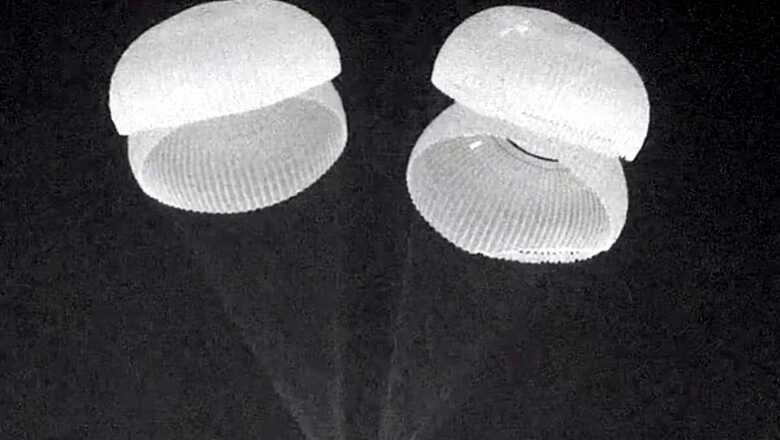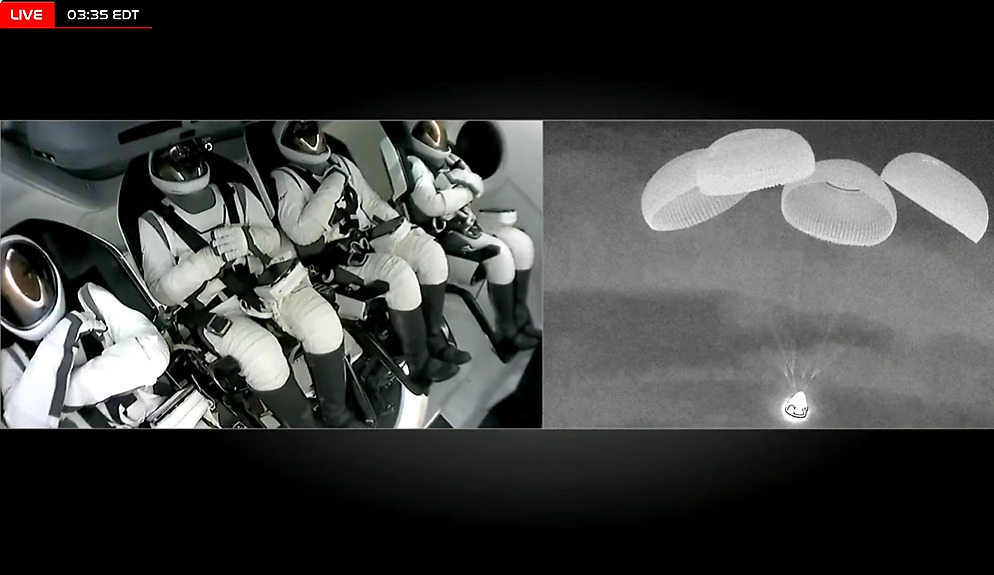
views
SpaceX’s Polaris Dawn mission capsule splashed down off the coast of Florida early Sunday after making history when its crew conducted the first-ever private spacewalk.
The spacecraft landed in the ocean at 3:37 am, with a recovery team deploying to retrieve the caspule and four crew. The four-member team led by billionaire Jared Isaacman launched Tuesday from the Kennedy Space Center, journeying deeper into the cosmos than any humans in the past half-century.
Splashdown of Dragon confirmed! Welcome back to Earth, @rookisaacman, @kiddpoteet, @Gillis_SarahE, @annawmenon pic.twitter.com/nILpMQh2sR— SpaceX (@SpaceX) September 15, 2024
‘Skywalker’
The Dragon spacecraft hit a peak altitude of 1,400 kilometers, more than three times higher than the International Space Station and the furthest humans had ever traveled from Earth since the Apollo missions to the Moon. With their Dragon spacecraft’s orbit brought down to 698.6 kilometers, Isaacman on Thursday swung open the hatch and climbed out into the void, gripping a structure called “Skywalker” as a breathtaking view of Earth unfolded before him.
Read More: What To Know About World’s First Private Spacewalk, Polaris Dawn Mission, Who Are The Civilians On Board?
“SpaceX, back at home we all have a lot of work to do, but from here, Earth sure looks like a perfect world,” he told mission control in Hawthorne, California, where teams erupted in applause. He went back inside after a few minutes and was replaced by a second astronaut, SpaceX engineer Sarah Gillis, who, like Isaacman, performed a series of mobility tests on SpaceX’s sleek, next-generation suits.


‘Giant leap forward’
Since Dragon doesn’t have an airlock, the entire crew were exposed to the vacuum of space. Mission pilot Scott Poteet and SpaceX engineer Anna Menon remained strapped in throughout as they monitored vital support systems. It marked a “giant leap forward” for the commercial space industry, said NASA chief Bill Nelson, as well as another triumphant achievement for SpaceX.
Though the company was only founded in 2002, it has outpaced its legacy competitors thanks in large part to founder Elon Musk. Since completing their extravehicular activity, the crew have continued to carry out roughly 40 science experiments — for example inserting endoscopic cameras through their noses and into their throats to image their airways and better understand the impact of long-duration space missions on human health.
They also demonstrated connectivity with SpaceX’s Starlink internet satellite constellation by sending back to ground control a high-resolution video of Gillis playing “Rey’s Theme” by “Star Wars” composer John Williams, on the violin. Polaris Dawn is the first of three missions under the Polaris program, a collaboration between Isaacman and SpaceX.
(With agency inputs)

















Comments
0 comment